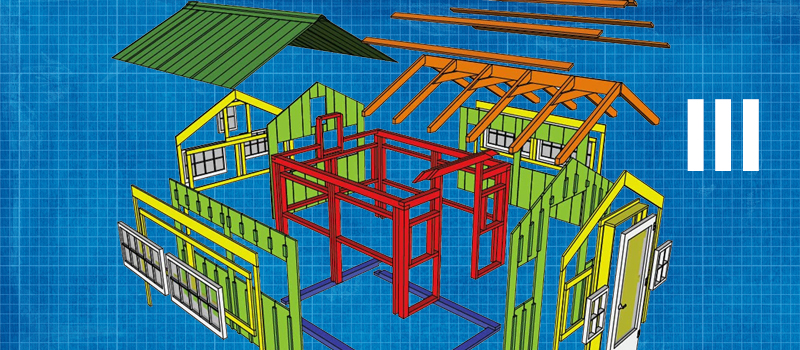How to Aquaponic When You Rent – Assess Your Resources
It is 100% possible to use Aquaponics when you rent and it amazes me how few people realize this simple fact. The days of pioneering people moving West may be over, but the ideals and lessons they left behind are there for those who feel the tug that pulls us to follow in their footsteps. For aquaponics in particular, they are so versatile in how systems can be configured, it can accommodate nearly any space. To be more self-reliant you have to produce more of your own food and build more of your comforts is usually at the heart of it. As you have looked up modern Aquaponics, you may have been very surprised at what you have found.
It is reassuring to know that there are others just like you and me with similar (or even less) living space than you have and the amazing things they are doing with it. You define what Aquaponics do for you. There is no right or wrong answer.
Let’s say you have chosen to focus on growing herbs because you want access to fresh more often and don’t want to pay the high prices for dehydrated spices. You have your focus! Now it’s time to gather your resources. This is where we really get into the meat of your mentality shifting from ‘consumer’ to ‘producer’ on your road to Master Aquaponics Maniac!
No one can do it all alone but I would rather do some of it instead of none.
Let’s assume you live in a large apartment building and have a very small area to work with, say 12-15 total square feet. You have a limited budget along with limited space. Couple those two with not knowing too much about Aquaponics itself, these are usually the excuses given for not even starting something anything considered Aquaponics.
Breakthrough the reasons you can’t do what you want and problem solves the ways you can.
Assess Your Resources
You know you will need containers to plant in, a growing medium that works, seeds, and some good hard-working fish to round out your closed ecosystem. For the preservation of your harvest, you will need to learn which method suits you, best given what you have available, and how to do it.
Because of your budget restrictions, you might be able to buy all you need (Consider getting yourself the Desktop Aquaponics Kit here in ThatAquaponicsGuy Shop) and put it all together, but cannot afford to buy everything new. Honestly, you don’t have to! You already have 50% of what you need just lying around your house. The containers for the grow bed and the fish tank can be inexpensive to get, the rest can also be gotten for (almost) free if you are willing to do the legwork.
Larger Containers – Flower pots or plastic plant containers that fit on a window sill can work in this Aquaponics System. Additionally, fish do not need to have any type of glass… it too can be a plant container to accommodate the fish and the water back and forth. Function first, looks second!
Seedling Containers – Paper cups with a bit of soil are all it takes (along with attentive watering and some sun rays) to get those seeds growing. Once they are big enough, you can transplant them into the grow bed medium of your choice.
Fertilizer – It’s in the water. It is not so much the excrement from the fish it is the ammonia they expel from their gills. If you have a biofilter and a good clarifier you should be able to maintain the right pH and Nitrite/Nitrate balance you need to have.
Monitors – Here’s where the investment of money comes in, you need to have a good pH balance monitor and bacteria monitor for those produced nitrogen particles in the water and system. These are usually portable and small for storage when not being used.
Growing Media. Due to the space given in this scenario, you won’t need very much. Clay pebbles are preferred, however, in a pinch some thoroughly washed gravel will do as well. Just make sure you have all the dust, dirt, and grime out or you muck up your system.
Pump and Timer – From the fish tank, through your biofilter, the water goes to the growing bed. You will need to invest in the pump and a timer that turns that pump on and off at the desired intervals.
Piping and Siphons – The water needs to get to the plants somehow, and the Piping can be pretty much anything that doesn’t spring a leak and can contain the pressure the pump puts on it. Additionally, the water needs to drain at a pace that benefits the plant and the fish. A bell siphon can be made inexpensively ( We will have a tutorial on that shortly).
Seeds. Seeds are incredibly inexpensive for the amount you get. Again, because you may be dealing with an extremely small space, a whole pouch of lettuce seeds may be too much. There are ways to get a variety of seeds without spending a lot of money.
You can buy a few different packs (for around $4-6 total) of seeds, take out what you want to use and take the rest to a seed exchange! Check your local agricultural extension office for information about seed exchanges in your area. Also, check farmer’s markets and Craigslist.
There are people who have so many extras, they give away. Asking for packets from last year on social media is another way to get free seeds. Their germination rate may be lower but it was free and you still reap the rewards of the harvest!
Preserving the Harvest. There are many methods that you can choose from to suit your needs and capabilities. Since what you have grown in this scenario are things like sage, oregano, chives, and rosemary, all you really need to do for preservation is to dry them out and store them! If you have been able to go further with peppers and tomatoes and such the like you can also use a dehydrator.
There are dehydrators you can buy that will speed up the process and ensure everything is truly dry but you can also simply use your oven on the lowest setting possible with the door opened a crack. Not the most energy efficient but it will do in a pinch. See if your friends have a dehydrator you can use or research different ways to dry them in the house. Most homes have some sort of humidity in them which runs the risk of molding due to the leaves not being fully dried. To combat that, you can have a small fan blowing air around.
You can also preserve your fresh herbs and spices by making an olive oil infusion. Place the herbs into a bottle with olive oil, cork it tightly and let it sit for a few days until the flavor has worked through it. This method requires you to use it sooner rather than later.
Another longer-term storage idea is placing herbs into ice cube trays and pouring olive oil over them. Freeze the tray until everything is solid and then simply pop them out. If using a plastic bag, make sure it is freezer grade. This is recommended for the hardier, thicker herbs such as rosemary. Other people will also place herbs into the ice tray and simply fill them with water. When they are making a soup or stew, they just grab a few cubes to add ‘fresh’ herbs to the meal!
As you can see above, all you have to do is shift your mentality.
Look at what you have around you that serves the same purposes as a “flower pot” would, for example. Just because it isn’t a certain shape or color doesn’t mean it can’t be turned into one! These are the first steps to seeing items that others would view as trash and repurposing them to fit your needs.
Function First, Looks Second!
One of the most common questions I get asked by new gardeners is “What should I grow?”
My answer is, “Grow what you eat.” I usually get a surprised look in response because it really is just that easy. Do you like a lot of green salads? Grow a jungle of different greens! Spinach and the leafy veggies do well in grow beds. If you try to plant two or three of each vegetable you enjoy eating, you will get overwhelmed and your results will likely suffer for it. Start small.
Remembering that there are people around you who are into the same thing and building your network of like-minded people will bring you knowledge, new resources to tap into, and increase your chances for success. You will likely make some great new friends in the process. No matter what ‘homesteading’ project you decide to tackle first, the basic steps are the same. Decide what you want to do, figure out what you need, assess your resources, and then implement the plan!
The Overall TakeAway
The tactical steps in doing getting your Aquaponics system together so are so in-your-face simple that none of us has an excuse for not making a concerted attempt to achieve a higher level of self-sufficiency.
Renter or not, having a positive attitude and a forward-thinking mindset will reap you many rewards as you move forward in both your preparedness and your homesteading journeys.






